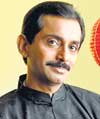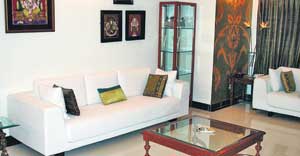
| Feng Shui-the art of living
The anomalies of modern living are becoming increasingly destructive with many approaches available for the people to redress the problems in the space. Feng Shui (pronounced "fung shway") provides an opportunity to achieve health, happiness and prosperity by harmonizing the environment. Feng Shui uses formulae's which determine the rising and falling energy in a given time span of an individual or a house and it includes, best directions, placements and orientations too. The philosophy of Feng Shui is embraced by people who are aware of the impact surroundings have on them and the need to take action to improve their lives. However using Feng Shui is a skill and it needs to be practiced correctly and its principles cannot be adapted simply to suit the circumstances of a place or an individual. Ancient people regarded the heavens, the earth and themselves as part of one system. The ancient Chinese would assign the work of locating ideal sites for construction to Geomancers who would investigate the earth formations, energies and watercourses. The knowledge of the Geomancers was valued and the findings were documented after the geomancers audited the site using their Luo Pan the most valued and revered compass of a Feng Shui Master. Interpreting the energy is a great skill and could help you achieve and reach your best if it is properly carried out. The purpose of Feng Shui is to create the right environment for the harmonious CHI (energy) to flow smoothly. When CHI flows gently through a house, it creates positive energy for the occupants and when it moves sluggish; it creates obstacles to the occupants in the form of diminished prosperity.
The traditional method for an ideal home was to achieve the Famous Chinese Green dragon-White Tiger design concept. This was nothing but achieving levels around the house by having the back higher than the front, left of the house higher than the right. It was also known as the armchair design, which was said to protect the house in the middle from nature's fury and make the house stable and strong. In modern city life, it would be difficult to achieve such levels around our home and we have no control on the shape and dimension of the neighbouring homes and buildings. In case you wish to adapt this method and you realize that the back wall of the house is shorter with regard to the front, you could go about planting trees or even use lights mounted on poles which illuminate and throw light upwards. The other important factor is the road. Road is said to conduct "CHI" - energy through environment and traffic patterns-which could affect the nature of the surroundings. Living close to highways and busy roads are not considered good as they have heavy vehicular movement and the CHI travels fast. Both in Vaasthu and in Feng Shui buildings located at the end of the road or at a "T" junction are considered extremely bad, as the energy seems to hurtle towards it. This has to be deflected and putting up a nice green hedge of healthy plants would act as a shield. Other alternatives would be relocating the door or putting up porch and the most common method would be to put up mirrors. Personally I desist from using regular mirrors as they cause more danger to oncoming vehicles especially in the nights when the lights are turned on.Buildings situated close to flyovers also cause immense inconvenience to the occupants. It is said that the ill effect of flyovers is more for those who live at the "eye level" of the flyover or underneath it. If the flyover is bending and appearing to cut through the building, it is considered very harmful and one could think of using dark glasses on the window panes, which would shield the home from the harmful sharp bends. If your home is situated beneath a flyover, the structure above your home would be overpowering and a very simple suggestion would be to put up lights on the four corners of the house focussed towards the under surface of the flyover to symbolically lift the fly over. Nevertheless this is not a good home as the residents would feel oppressed and drained. Feng Shui is not just organizing the interiors or putting up enhancers in place, it is more about practicalities and adjusting ourselves to the environment and surroundings. To live in a place which could be transformed and made supportive to the occupants is the key to good Feng Shui. (This column will appear once a month, on the third week. The next installment will be published on November 19. The columnist, who resides in India, could be reached through –Fengshui@fengshuiserver.com) |
| || Front
Page | News
| Editorial
| Columns
| Sports
| Plus
| Financial
Times | International
| Mirror
| TV
Times | Funday
Times | |
| |
Copyright
2006 Wijeya
Newspapers Ltd.Colombo. Sri Lanka. |

